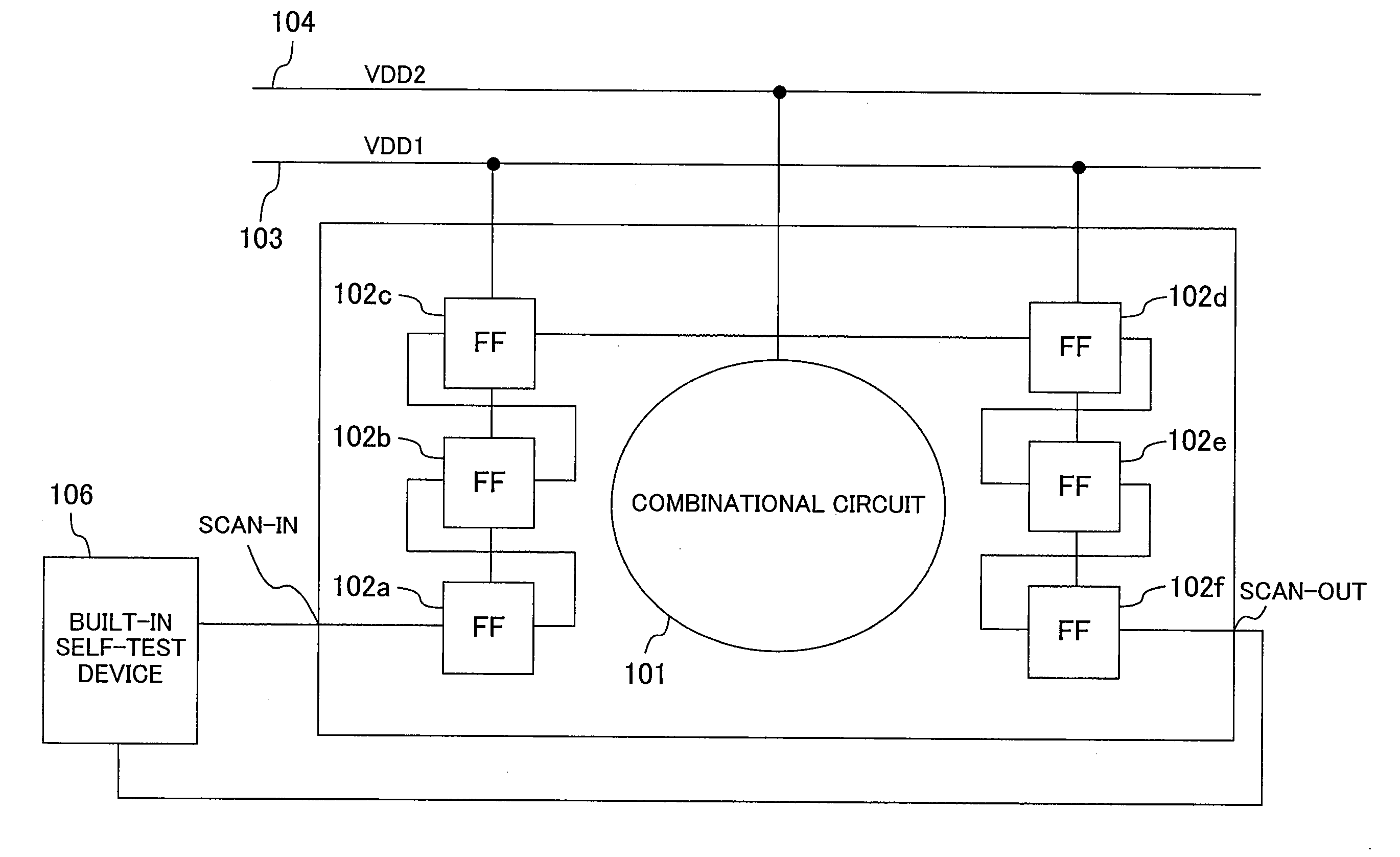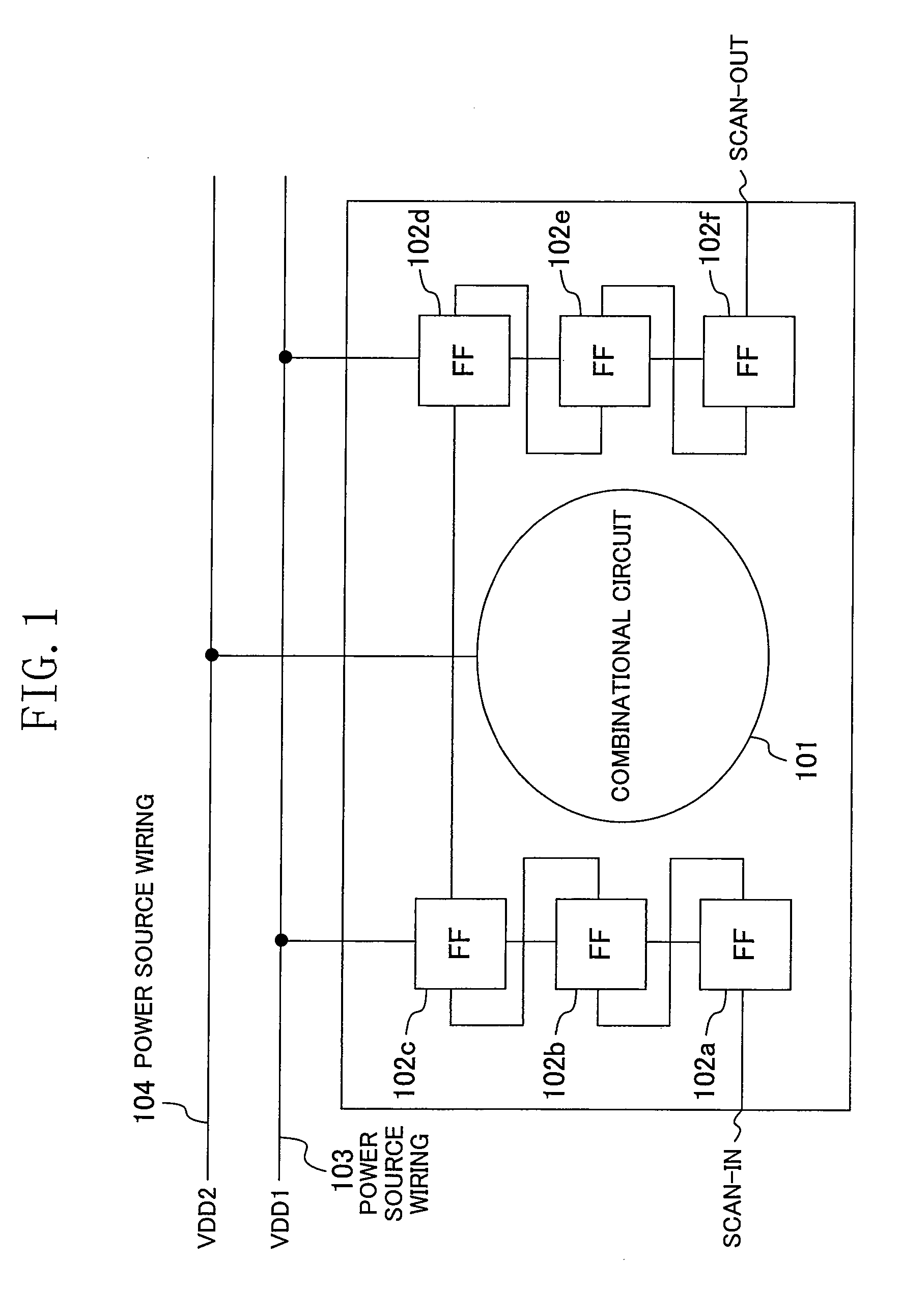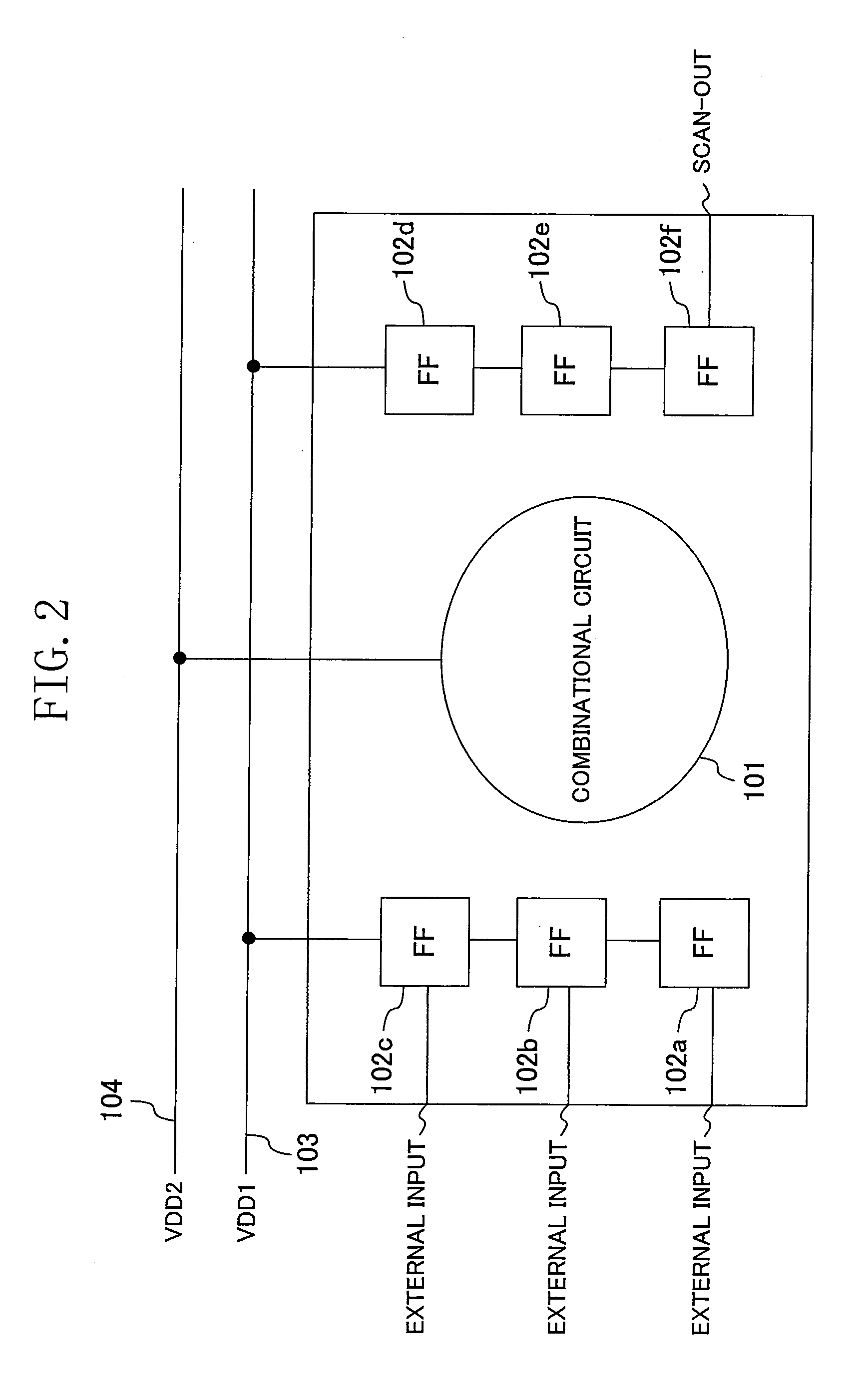Semiconductor integrated circuit and method for testing the same
a technology of integrated circuits and semiconductors, applied in the direction of liquid/fluent solid measurement, power supply for data processing, instruments, etc., can solve the problems of increasing test costs, difficult to ensure high-quality test, increasing power consumption of combinational circuits, etc., to reduce test time, reduce test costs, and reduce power consumption
- Summary
- Abstract
- Description
- Claims
- Application Information
AI Technical Summary
Benefits of technology
Problems solved by technology
Method used
Image
Examples
first embodiment
[0087]Hereinafter, a semiconductor integrated circuit and a method for testing the same according to a first embodiment of the present invention will be described.
[0088]FIG. 1 is a circuit diagram illustrating the configuration of the semiconductor integrated circuit of the first embodiment. In FIG. 1, the reference numeral 101 denotes a combinational circuit. The reference numerals 102a to 102f indicate flip flop circuits. The reference numeral 103 refers to flip-flop-circuit power source wiring for supplying power supply voltage to the flip flop circuits 102a to 102f, while the reference numeral 104 represents combinational-circuit power source wiring for supplying power supply voltage to the combinational circuit 101. The power source wiring 103 and the power source wiring 104 are separate from, and function independently of, each other, such that the power source wiring 103 can apply a power supply voltage VDD1 to the flip flop circuits 102a to 102f, and the power source wiring ...
second modified example
of the First Embodiment
[0096]A typical semiconductor integrated circuit is not always designed so as to be capable of withstanding high-speed shift operation when the power supply voltage for normal operation is applied to the semiconductor integrated circuit. Even so, since the semiconductor integrated circuit of FIG. 1 is configured so that during shift operation, a voltage higher than that supplied in normal operation can be applied only to the flip flop circuits, the shift operation can be performed at high speed.
[0097]FIG. 5A indicates a test method for realizing the above-described high-speed shift operation. The test method shown in FIG. 5A includes four steps 205 to 208. In the first step 205, the power supply voltage to the flip flop circuits is raised. In the second step 206, test data is set in the flip flop circuits. In the third step 207, the power supply voltage to the flip flop circuits is lowered. In the fourth step 208, the combinational circuit is operated. By perf...
third modified example
of the First Embodiment
[0099]In the semiconductor integrated circuit of the first embodiment, the two power supply voltages VDD1 and VDD2 may be supplied from devices external to the semiconductor integrated circuit, or may be supplied by a variable power supply circuit included in the semiconductor integrated circuit. FIG. 7 illustrates a semiconductor integrated circuit provided with a variable power supply circuit. In FIG. 7, the reference numeral 105 denotes the variable power supply circuit.
PUM
 Login to View More
Login to View More Abstract
Description
Claims
Application Information
 Login to View More
Login to View More - R&D
- Intellectual Property
- Life Sciences
- Materials
- Tech Scout
- Unparalleled Data Quality
- Higher Quality Content
- 60% Fewer Hallucinations
Browse by: Latest US Patents, China's latest patents, Technical Efficacy Thesaurus, Application Domain, Technology Topic, Popular Technical Reports.
© 2025 PatSnap. All rights reserved.Legal|Privacy policy|Modern Slavery Act Transparency Statement|Sitemap|About US| Contact US: help@patsnap.com



